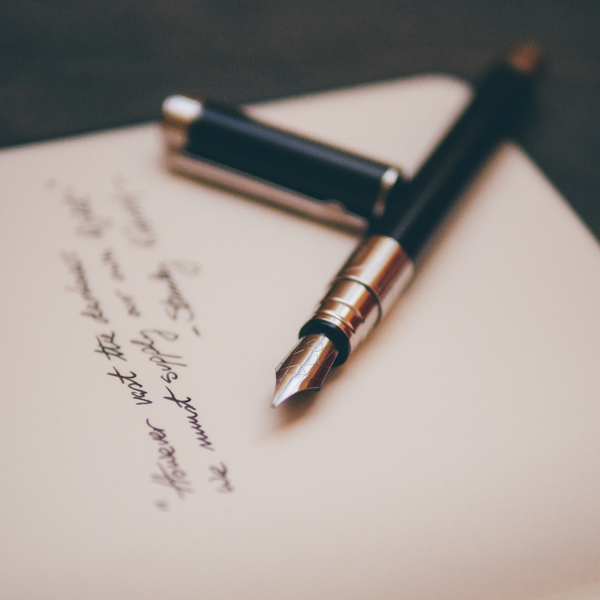Writing short stories is an art that requires a blend of creativity, structure, and discipline.
Utilizing creative writing skills is crucial for coming up with different titles and developing compelling characters.
Unlike novels, short stories tend to be concise, focusing on a single theme or event.
Short story writing is a skill that can be honed with practice and dedication.
Whether you’re a seasoned fiction writer or a beginner, understanding the fundamentals of story structure and character development is crucial.
This guide will walk you through the process of writing a short story, from generating ideas to polishing your final draft.
Let’s dive into the steps that will help you craft a compelling short story.
Key Takeaways:
- Understand the Core Elements: Grasp the essential components of a short story, including character development, plot structure, and conflict resolution.
- Develop a Strong Writing Process: From brainstorming short story ideas to crafting the first draft and self-editing, follow a structured approach.
- Engage Your Readers: Use compelling dialogue, vivid descriptions, and plot twists to keep readers engaged and deliver a satisfying conclusion.
Core Elements of a Short Story
Character Development
Characters are the heart of any story.
To write short stories that resonate with readers, you need to create well-rounded characters.
Focus on their motivations, desires, and conflicts.
This will make them relatable and engaging.
Character development involves more than just describing physical attributes.
Delve into your character's life, their past experiences, and how these shape their actions and decisions.
This depth will add layers to your story and keep readers invested.
Plot Structure
A strong plot is essential for a complete story.
The plot should have a clear beginning, middle, and end.
Start with an inciting incident that sets the story forward, followed by rising action, climax, and a satisfying conclusion.
Plot twists can add excitement and keep readers engaged.
However, ensure that these twists make sense within the context of your story.
A well-structured plot will guide your readers through the narrative seamlessly.
Generating Short Story Ideas
Brainstorming Techniques
Coming up with short story ideas can be challenging.
Use brainstorming techniques like mind mapping, free writing, or drawing inspiration from newspaper articles and personal experiences.
These methods can spark creativity and lead to unique story concepts.
Another effective way to generate ideas is to ask "what if" questions.
For example, "What if a character discovers a hidden talent?" or "What if two strangers' lives intersect in an unexpected way?"
These questions can open up new possibilities for your story.
Drawing Inspiration from Other Writers
Reading works by other writers can provide valuable insights and inspiration.
Analyze how they structure their stories, develop characters, and create tension.
This can help you refine your own writing style and approach.
Literary magazines are excellent resources for discovering new short stories.
Subscribing to these magazines can expose you to diverse writing styles and genres, broadening your understanding of what makes a great short story.
Crafting the First Draft
Setting the Scene
The first draft is where you bring your ideas to life.
Start by setting the scene.
Describe the time period, location, and atmosphere.
This will help readers visualize the story and immerse themselves in the narrative.
Use vivid descriptions and sensory details to create a rich, immersive world.
This will make your story more engaging and memorable. Remember, the goal is to show, not tell.
Developing the Plot
Once the scene is set, focus on developing the plot.
Introduce the main characters and establish the story's conflict.
This conflict should drive the narrative and keep readers invested in the outcome.
As you write, keep the story's structure in mind.
Ensure that each scene contributes to the overall plot and moves the story forward.
This will help maintain a cohesive and compelling narrative.
Writing Compelling Dialogue
Creating Realistic Conversations
Good dialogue is essential for character development and plot progression.
It should sound natural and reflect the characters' personalities and emotions.
Avoid using dialogue as an info dump; instead, let it reveal character traits and advance the story.
To write realistic conversations, listen to how people speak in real life.
Pay attention to their speech patterns, slang, and mannerisms.
This will help you create authentic and engaging dialogue.
Balancing Dialogue and Narrative
While dialogue is important, it's crucial to balance it with narrative.
Use narrative to provide context, describe actions, and convey internal thoughts.
This will create a well-rounded and dynamic story.
Too much dialogue can overwhelm readers, while too little can make the story feel static.
Strive for a balance that keeps the story flowing and maintains reader interest.
Building Tension and Conflict
Introducing Conflict
Conflict is the driving force of any story.
It creates tension and keeps readers engaged.
Introduce conflict early in the story and build it up gradually.
This will create a sense of anticipation and excitement.
Conflict can be internal (within a character) or external (between characters or with the environment).
Both types of conflict can add depth and complexity to your story.
Resolving Conflict
A satisfying conclusion is essential for a complete story.
Resolve the conflict in a way that feels natural and satisfying.
This resolution should provide closure and leave a lasting impression on the reader.
Avoid deus ex machina endings, where an unexpected event suddenly resolves the conflict.
Instead, ensure that the resolution is a logical outcome of the characters' actions and decisions.
Editing and Revising Your Story
Self-Editing Techniques
Once you've completed the first draft, it's time to self-edit.
Read through your story with fresh eyes and look for areas that need improvement.
Focus on grammar, sentence structure, and overall coherence.
Self-editing can be challenging, but it's a crucial step in the writing process.
Take your time and be thorough. This will help you create a polished and professional final draft.
Seeking Feedback
Feedback from other writers can provide valuable insights and help you improve your story.
Join writing groups or workshops where you can share your work and receive constructive criticism.
Be open to feedback and willing to make changes.
This will help you grow as a writer and enhance your storytelling skills.
Polishing the Final Draft
Proofreading
Proofreading is the final step before submitting your story.
Check for spelling, punctuation, and grammatical errors.
A grammatically correct story will make a better impression on readers and editors.
Consider using proofreading tools or hiring a professional proofreader.
This can help you catch errors that you might have missed.
Formatting
Proper formatting is essential for a professional-looking story.
Follow the submission guidelines of the literary magazines or publishers you're targeting.
This includes font type, size, margins, and spacing.
A well-formatted story is easier to read and shows that you take your writing seriously.
It can also increase your chances of getting published.
Submitting Your Story
Choosing the Right Market
Research literary magazines and publishers that accept short stories.
Look for those that align with your story's genre and style.
This will increase your chances of finding the right audience for your work.
Consider submitting to both established and emerging markets.
This can help you gain exposure and build your writing portfolio.
Writing a Cover Letter
A cover letter is your introduction to the editor. Keep it brief and professional.
Mention the title of your story, a short summary, and any relevant writing credits.
A well-written cover letter can make a positive impression and increase your chances of getting published.
Be sure to follow the submission guidelines and address the editor by name if possible.
Promoting Your Published Story
Using Social Media
Once your story is published, use social media to promote it.
Share the link with your followers and encourage them to read and share it.
This can help you reach a wider audience and gain more readers.
Engage with your audience by responding to comments and messages.
This can help you build a loyal readership and establish your presence as a writer.
Networking with Other Writers
Networking with other writers can provide valuable opportunities for collaboration and promotion.
Attend writing conferences, join online writing communities, and participate in writing groups.
Building relationships with other writers can help you learn from their experiences and gain support and encouragement.
It can also lead to new opportunities for publication and promotion.
Tips for Writing Captivating Short Stories
Ever wondered how to craft short stories that leave readers spellbound?
You're in the right place!
Whether you're a seasoned writer or just starting out, these tips will elevate your storytelling game.
Dive in and discover how to make your short stories truly unforgettable.
- Start with a Strong Hook: Grab your reader's attention from the very first sentence. A compelling opening sets the tone for the entire story.
- Focus on a Single Conflict: Short stories thrive on simplicity. Concentrate on one central conflict to keep your narrative tight and engaging.
- Develop Relatable Characters: Even in a short format, your characters should be well-rounded and relatable. Give them distinct personalities and motivations.
- Show, Don’t Tell: Use descriptive language and actions to convey emotions and events. This makes your story more immersive and vivid.
- Use Dialogue Effectively: Dialogue can reveal character traits and advance the plot. Make sure it sounds natural and serves a purpose.
- Maintain a Consistent Point of View: Stick to one point of view to avoid confusing your readers. Whether it’s first-person or third-person, consistency is key.
- Create a Memorable Setting: Even in a short story, the setting can enhance the mood and support the narrative. Use sensory details to bring it to life.
- Build to a Climax: Your story should build tension and lead to a satisfying climax. This is the moment where the conflict reaches its peak.
- Craft a Strong Ending: A powerful ending leaves a lasting impression. Whether it’s a twist, a resolution, or an open-ended conclusion, make sure it resonates.
- Edit Ruthlessly: Short stories require precision. Edit your work to remove unnecessary words, tighten the narrative, and polish your prose.
By following these tips, you can enhance your short story writing skills and create compelling narratives that captivate your readers from start to finish.
Mastering Short Story Writing Begins Now!
Embarking on the journey of writing a short story is both rewarding and challenging.
By mastering the core elements of storytelling, honing a robust writing process, and captivating your readers, you can craft stories that leave a lasting impact.
Don't forget the importance of editing, seeking feedback, and promoting your work.
With dedication and practice, you have all the tools to become a successful short story writer.
So, grab your pen, unleash your creativity, and start writing your next masterpiece today!
Writing FAQs
Are you ready to dive into the world of short story writing but find yourself stuck with questions?
You're not alone! Crafting compelling narratives can be a thrilling yet challenging endeavor.
That's why we've compiled this handy FAQ section to address some of the most common queries writers have.
Whether you're struggling to come up with fresh ideas, wondering about the importance of character development, or looking to avoid common pitfalls, we've got you covered.
Let's get those creative juices flowing and turn your writing dreams into reality!
How do I come up with short story ideas?
Use brainstorming techniques like mind mapping, free writing, and drawing inspiration from newspaper articles and personal experiences. Asking "what if" questions can also open up new possibilities for your story.
How important is character development in a short story?
Character development is crucial for creating relatable and engaging characters. Focus on their motivations, desires, and conflicts to add depth and keep readers invested in the story.
What are some common mistakes to avoid when writing a short story?
Common mistakes include info dumping through dialogue, lack of conflict, and weak plot structure. Ensure that your story has a clear beginning, middle, and end, and that each scene contributes to the overall narrative.
How do I create a compelling plot for my short story?
Start with a strong premise and build your plot around a central conflict or challenge. Outline the key events and turning points that will drive your story forward. Make sure each scene adds to the tension and leads to a satisfying resolution.
How can I make my dialogue more realistic?
Listen to how people speak in real life and try to capture that natural rhythm in your writing. Avoid overly formal language and use contractions, slang, and interruptions to make conversations feel authentic. Remember, dialogue should reveal character and advance the plot.
What is the best way to start a short story?
Begin with a hook that grabs the reader's attention right away. This could be an intriguing question, a vivid description, or an action-packed scene. The goal is to draw readers in and make them want to keep reading.
How do I know when my short story is finished?
A short story is finished when it has a clear beginning, middle, and end, and all loose ends are tied up. Make sure your story has resolved its central conflict and provided a sense of closure for the reader. It can also be helpful to get feedback from others to see if they feel the story is complete.
How can I improve my writing style?
Read widely and often to expose yourself to different styles and techniques. Practice writing regularly and experiment with different genres and voices. Pay attention to feedback from others and be willing to revise and refine your work.
What role does setting play in a short story?
Setting provides the backdrop for your story and can influence the mood, tone, and actions of your characters. Use descriptive language to create a vivid sense of place and consider how the setting impacts the plot and character development.
How do I handle writer's block?
Take a break and do something different to clear your mind. Try free writing or brainstorming to get your creative juices flowing. Set small, achievable writing goals and reward yourself for meeting them. Sometimes, simply changing your writing environment can make a big difference.
How can I make my short story stand out?
Focus on creating unique characters, an engaging plot, and a distinctive voice. Pay attention to the details and strive for originality in your writing. Don't be afraid to take risks and push the boundaries of traditional storytelling.
What are some tips for editing and revising my short story?
Take a break after finishing your first draft before you start revising. Read your story out loud to catch awkward phrasing and errors. Focus on big-picture issues like plot, character, and pacing before fine-tuning grammar and punctuation. Consider getting feedback from others to gain new perspectives.
How do I submit my short story for publication?
Research literary magazines, contests, and anthologies that accept short story submissions. Follow their submission guidelines carefully and tailor your cover letter to each publication. Be prepared for rejection and keep submitting your work until you find the right fit.
Eager to start crafting your own short stories? Check out Jerry B. Jenkins' video!
Want even more content about creativity and art?
Be sure to check out all of our creative chronicles!
Love writing and considering creating your own written masterpieces?
Check out some of our other articles:







